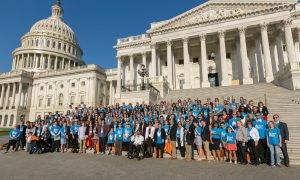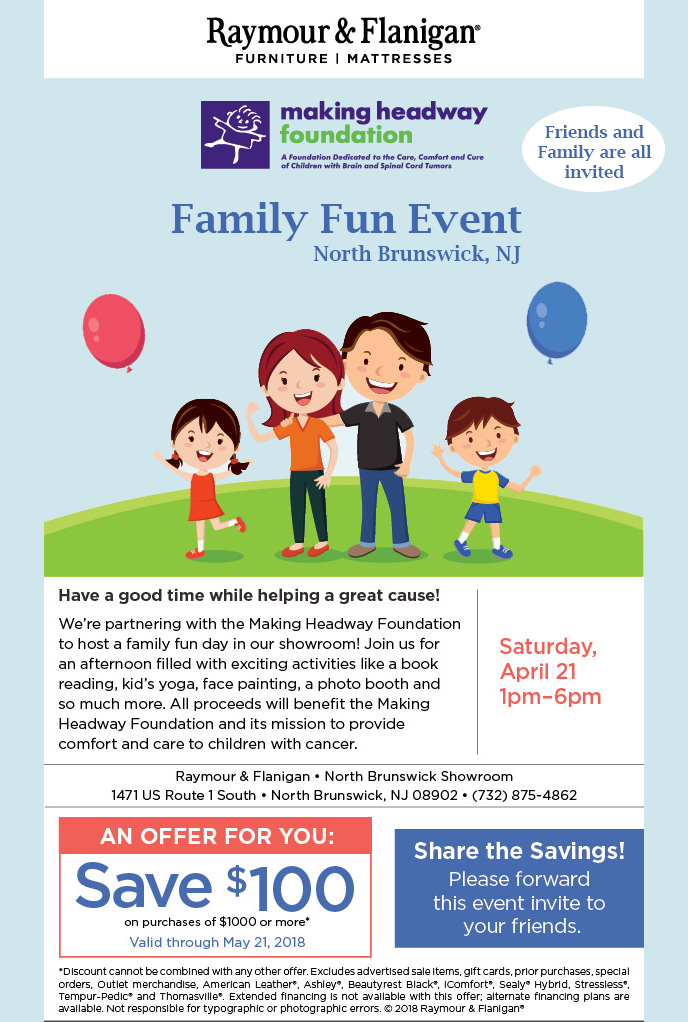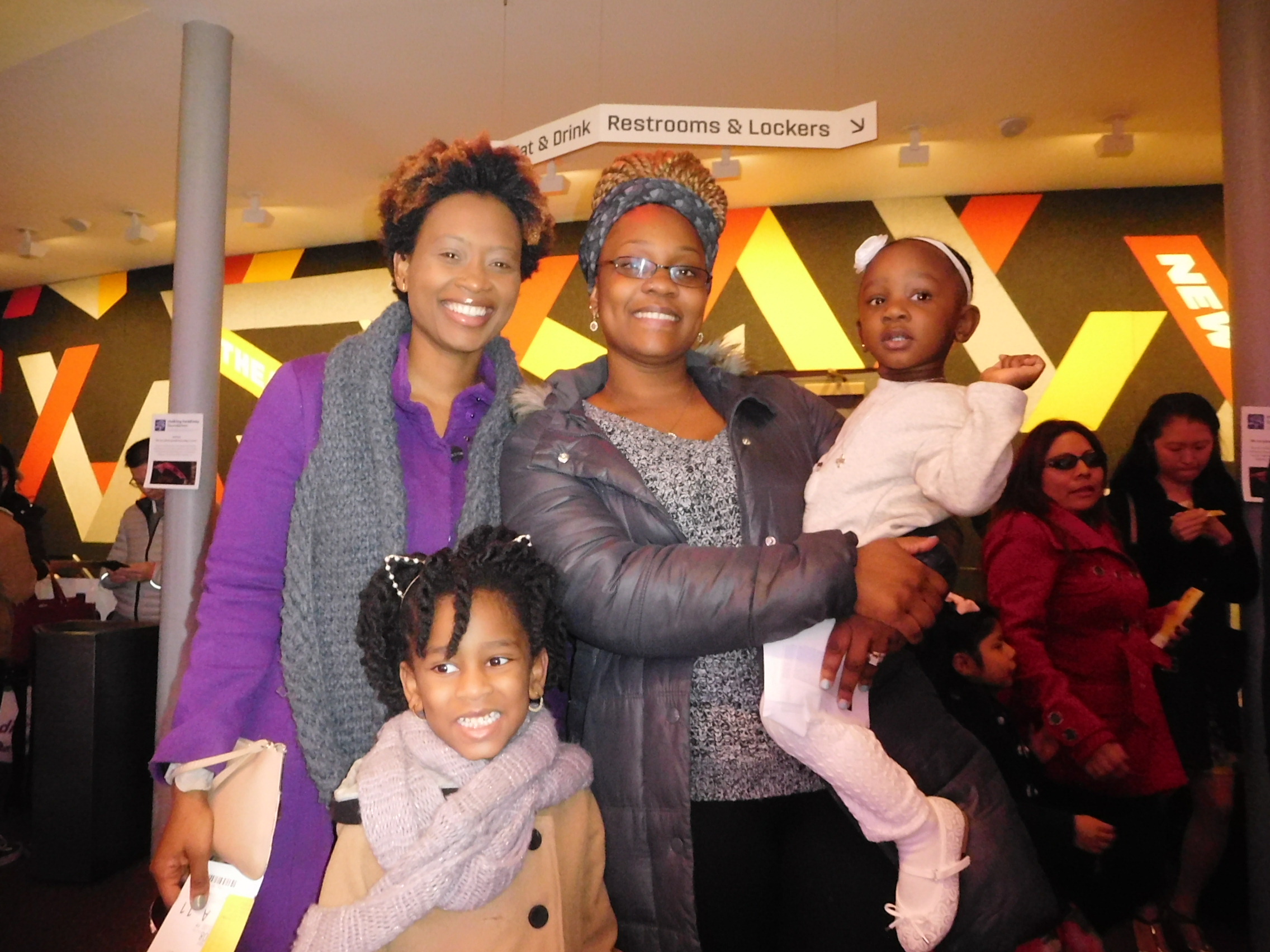Making Headway Winter Newsletter – Special Edition
Direct link (or click on image below):
https://makingheadway.org/wp-content/uploads/2019FallNewsletterFinalMH.pdf
Direct link (or click on image below):
https://makingheadway.org/wp-content/uploads/2019FallNewsletterFinalMH.pdf
Earlier this year, the NYU Langone Medical Center launched a new clinical trial led by pediatric neuro-oncologist Dr. Sharon Gardner. The trial is exploring the effects of a new drug on children with a class of tumors that contain a devastating mutation, known as H3 K27M. This mutation is associated with one of the most deadly forms of pediatric brain tumors, known as DIPG (the survival rate is less than 1%).
Clinical trials, utilizing this new drug on adults with the mutation, have been underway for some time, and have shown promising results. A handful of children have already been treated with the drug under the “compassionate use” protocol, and some of them have also responded well. While no one can yet speak to the drug’s efficacy, Dr. Gardner is enthusiastic about the possibilities: “There is no cure for this kind of tumor. None. We’re hopeful that this new therapy can improve the dire prognosis for these children.”

For the past decade, the Making Headway Foundation has awarded college scholarships to survivors of a childhood brain or spinal cord tumor. This award-winning non-profit organization recently announced 14 winners for this fall, including local student Lucas Sundwall. Lucas is a graduate of Guilford High School, class of 2016 in Guilford, CT. He is a member of the Global Affairs Society and has been named to the Dean’s List each of his first three semesters at Quinnipiac University. This fall, Lucas will be returning to Quinnipiac, with plans to major in Law.
Lucas was diagnosed with a low grade intramural astrocytoma of the cervical spine at age 7. As a result of the surgery to remove the tumor, he became a quadriplegic. This category of tumor, one of many types of pediatric brain and spinal cord tumors, are also known as Central Nervous System (CNS) tumors. Pediatric CNS tumors are more common than any other type of childhood cancer and cause more deaths than any other childhood disease. Thousands of children in the U.S. receive this diagnosis each year, changing their lives, and the lives of their families forever.
Lucas wrote in his scholarship application, “My ultimate goal as a future advocate attorney is to render services to the local disabled population in a manner that is both effective and provides the client with a sense of independence and/or self worth within the community”
“I can think of no student more deserving of additional support for his education than Lucas” – Assistant Legal Studies Professor Jessica Hynes, Quinnipiac University.
Since 1996, the Making Headway Foundation has been supporting families of children diagnosed with brain or spinal cord tumors. During this time, we have helped thousands of families through unimaginably difficult times, providing a wide range of holistic programs and services.
The Making Headway Foundation’s mission has been to provide care and comfort for children with brain and spinal cord tumors, while funding medical research geared to better treatments and a cure. Today, Making Headway continues their unique work, offering a continuum of services that includes individual counseling, educational advocacy, in-hospital quality-of-life programs, fun family events, medical research grants, facilitating clinical trials, neuro-oncology fellowships, college scholarships, and so much more. In 2018, Making Headway expanded their scholarship program to include significantly more winners than any previous year. Making Headway funded 12 of the scholarships, with the Scott J. Reisser Fund providing funding for two more. The Scott J. Reisser Memorial Scholarship Fund was established by Fritz and Joanne Reisser to honor the memory of their 22-year-old son, who succumbed to a brain tumor just short of achieving his dream of college graduation. To learn more about Making Headway, or to support their mission, contact them at www.MakingHeadway.org or 914-238-8384.

After years of advocacy, Congress finally passed the Childhood Cancer Survivorship Treatment Access and Research (STAR) Act. This is one of the most comprehensive childhood cancer bills ever introduced to Congress, and will advance pediatric cancer research and address the ongoing needs of survivors. Making Headway is so proud to have been part of the successful advocacy team and are grateful to all the families who made this possible.
Just a few weeks ago, Making Headway Foundation sponsored families that we work with to be part of “Head to the Hill”, a day to advocate for brain tumor research and programs on Capitol Hill. Four Making Headway families, each impacted by a childhood brain tumor, told their story at the offices of Senators Chuck Schumer, Kirsten Gillibrand, Richard Blumenthal, and Chris Murphy, as well as eight members of the House of Representatives. Making Headway is so proud of these families, each who was able to connect with public officials in a way that even the best paid lobbyist could only dream of.

Raymour & Flanigan has chosen to honor and support Making Headway at a fun, family event this weekend in North Brunswick, NJ. They are hosting a free afternoon of activities, kid’s yoga, face-painting, a photo booth, and more to support our mission. Everyone is invited to come and enjoy the fun.
– Sunday, April 21st, 1pm-6pm.
– Raymour & Flanigan, 1471 US Route 1 South, North Brunswick, NJ 08902.

On Sunday April 8, hundreds of families attended a special Broadway Show at the New Victory Theater. One of the many ways that Making Headway works with families is through annual events, like our spring Broadway Show (now in its 22nd year). Each family who attended has a child diagnosed with a brain or spinal cord tumor. Each family has endured unimaginable pain and hardship; yet on this day the theater is filled with smiles, hugs, and the joy of laughing children. They all share a common bond and experience, which creates a unique feeling that only “family” can provide.

From www.sciencemag.org
It took an extra 6 months, but Congress has finally completed its work on a spending plan for the 2018 fiscal year, which began last October. And the delay was good news for many federal science agencies. President Donald Trump today signed into law a $1.3 trillion spending package that largely rejects deep cuts to research agencies proposed by the White House and, in many cases, provides substantial increases. When it comes to federal research spending, there are “some silly good numbers in here,” tweeted Matt Hourihan, who analyzes U.S. science spending patterns for AAAS (publisher of ScienceInsider) in Washington, D.C., when the deal was released this past Wednesday.
The increases were made possible, in large part, by an agreement reached earlier this year to raise mandatory caps on civilian and military spending that gave lawmakers an additional $300 billion to spend this year and next.
Here’s a look at some of the top line numbers for key science agencies:
The Making Headway’s Winter Newsletter is here.
– Scholarship Winners, Making Headway Expands Educational Services, New Grants Funded by Making Headway, Fellowship Alumni Update, Events and Activities, Broadway Show for Families, Real Families, Real Impact, and so much more…
Today, there are more than 28,000 children (ages 0-19) living with brain or spinal cord tumors, commonly referred to as Central Nervous System (CNS) tumors. Over 2,500 children are diagnosed every year (seven every day). Their lives are changed forever. Treatments for pediatric CNS tumors are limited and they cause more deaths than any other type of pediatric cancer. The Making Headway Foundation works to help these children, and their families through a variety of programs, services, and research. Learn more at https://makingheadway.org/facts/.
Millennials have been called many things, but they aren’t often acknowledged for their consistent and generous support for charities. This passion to give back is exemplified in the upcoming 4th Annual Greeley All-Athlete Walkathon. More than a dozen local athletic teams are coming together to support Making Headway and Pediatric/Adolescent cancer research and programs that assist these children and their families. Help support their effort by attending the event or donating to the cause. To donate or learn more, visit https://chuffed.org/project/greeley. #giving
Contact us
Making Headway Foundation, Inc.
115 King Street
Chappaqua, NY 10514-3460
Telephone: (914) 238-8384
Fax: (914) 238-1693
